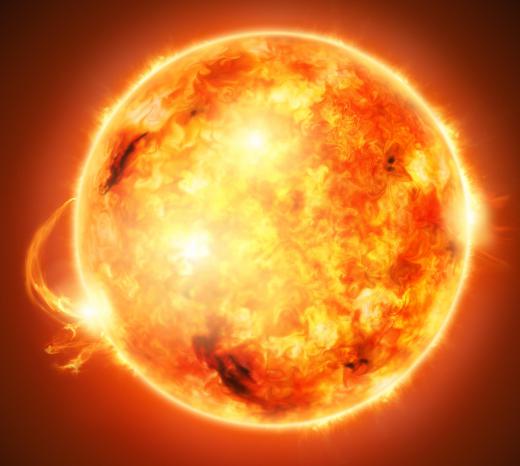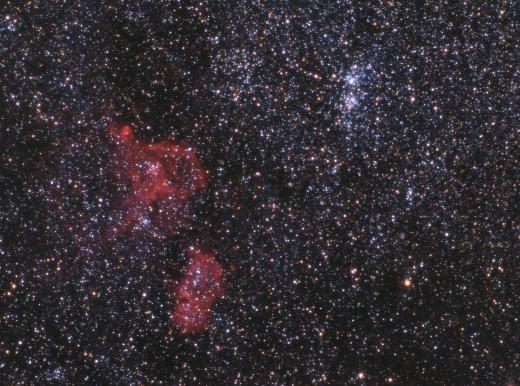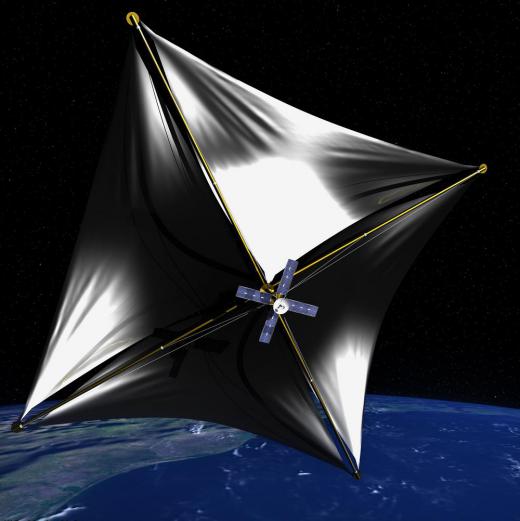What is the Heliosphere?
 Michael Anissimov
Michael Anissimov
The heliosphere is a large bubble in space created by the solar wind from the Sun. At the fringes of the heliosphere, the solar wind collides with gases from the interstellar medium and stops being the dominant space weather. The heliosphere is huge -- its closest boundary is about 100 AU (astronomical units, or Earth-Sun distances) away, while its farthest boundary its 200-300 AU distant. The heliosphere is shaped elliptically, like the tail of a comet, because of the Sun's fast motion through the interstellar medium as it orbits the galactic center.
As stated, the cause of the heliosphere is the solar wind. The solar wind is a continuous stream of charged particles, mostly free electrons and protons, which flow from the Sun at a velocity of 400 to 700 km/s (about 1,000,000 mph). This works out to 6.7 billion tons per hour, or a mass equal to the Earth every 150 million years. While this sounds like a lot, it is actually very diffuse due to the vastness of space.

Besides the solar wind, the heliosphere is also maintained by the Sun's magnetic field, which extends outwards at least 100 AU, and has a shape similar to that of the dress of a spinning ballerina due to the Sun's rotation every 27 days. This structure, the heliospheric current sheet, creates a ripple in the entire heliosphere, and along with the heliosphere itself, is the largest structure in the solar system.

Besides the heliospheric current sheet, the heliosphere has other structure. For instance, there's the termination shock, a boundary about 70-90 AU from the Sun where the solar wind goes from being supersonic to subsonic. This boundary was crossed by the space probe Voyager II in 2007. Actually, the probe passed it five times, because the boundary fluctuates due to corresponding fluctuations in the solar output, including solar flares. In space, the speed of sound is far faster than on Earth (about 100 km/s), so the solar wind is still moving quickly at this distance, just not quickly enough to exceed the speed of sound.

Farther out than the termination shock is the heliopause, where the charged particles in the solar wind collide with the particles of the interstellar medium, and the bow shock, where the solar wind ceases to have any effect on the interstellar medium at all. Neither has yet been reached by our space probes, but they will be by 2020. In addition, the Interstellar Boundary Explorer, launched in 2008, will provide valuable information about the interstellar boundary.
AS FEATURED ON:
AS FEATURED ON:














Discussion Comments
@Mammmood - It’s possible, although nothing in the article suggests that scenario. It appears that any contact we’ve had with the heliosphere has come as a result of sending up our space probes.
What I wonder about is if it’s even possible to “burst” this bubble in space, and if so, what would be the effects? This is an enormous structure that is just filled up with solar energy.
Perhaps with the heliosphere gone we might see an outburst of cosmic rays that would do as you suggested. However, I think that in it’s current state, all of that energy is self contained.
The heliosphere sounds like a cosmic phenomena that could affect the Earth one way or another. I’ve heard, for example, that solar flares could cause EMP (electromagnetic pulse disruptions) on Earth for example, which would knock out our electrical grid and other communications infrastructure, at least temporarily.
I don’t know how powerful the heliosphere is relative to its positioning near the Earth, but I imagine it could have some effect, at least on an atmospheric level.
Perhaps it could impede the flow of cosmic rays to the Earth and this would reduce the amount of radiation and subsequent heating that happens on the planet. That’s my unscientific theory anyway.
Post your comments